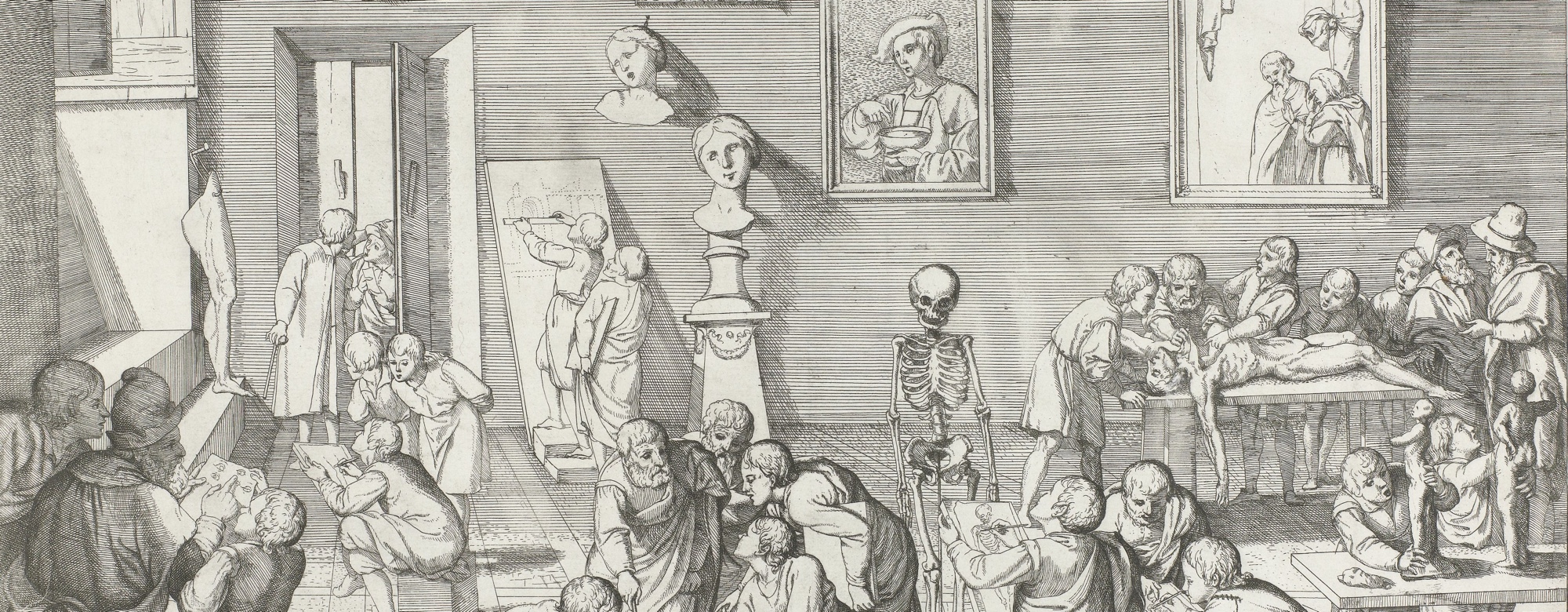Today we are publishing the first in a series of position papers dealing with the various parts of the European Commission’s proposal for a Directive on Copyright in the Digital Single Market. Today’s paper deals with the Commission’s proposal to introduce a mandatory exception that would allow a limited number of beneficiaries to use works and other subject-matter “in digital and cross-border teaching activities” (you can download a pdf version of the paper here). From our perspective the proposal, while well intended, is a missed opportunity to provide the robust education exception that educators, students and everyone else engaging in educational activities, both online and offline, needs. For this reason the paper argues for the introduction of a mandatory exception for educational purposes that does not primarily focus on the type of person or institution doing the teaching, but rather on the educational purpose of the use, and that cannot be excluded by Member States if licensed content is available.
Position paper: Better Copyright Reform for Education
Exceptions and limitations to copyright for education should support necessary access and re-use of copyrighted content of all types in a variety of education settings, locally and across borders. Copyright needs to be reshaped to be fit for modern education—which spans the lives of learners, and takes place in a variety of formal and informal settings, online as well as off. In this context, exceptions and limitations should promote positive learning outcomes, and the rights of copyright owners should be balanced with the public interest. We also need to reduce legal uncertainty faced by educators that use copyrighted content.
What is proposed in the directive?
In the Proposal for a Directive on Copyright in the Digital Single Market, the European Commission proposes to introduce a mandatory exception or limitation to copyright for educational purposes. The exception only covers the acts of reproduction, communication to the public, and making available to the public of protected works and other subject matter made in the context of a digital use. The digital uses have to be made for the sole purpose of illustration for teaching. Recital 16 clarifies that all digital uses that “support, enrich or complement the teaching, including the related learning activities” are covered.
The exception is intended solely for activities “carried out under the responsibility of educational establishments”. The uses allowed must (1) take place on the premises of the establishment or (2) through the establishment’s secure electronic network, accessible only by its teachers and learners. The concept of educational establishment is not defined, but Recital 15 states that “all educational establishments in primary, secondary, vocational and higher education to the extent they pursue their educational activity for a non-commercial purpose” are covered. The noncommercial nature of the activity is a condition of the use, however “[t]he organisational structure and the means of funding of an educational establishment are not the decisive factors” to assess that.
The three-step test laid down in the InfoSoc Directive applies to this new exception. Another rule from the InfoSoc that applies to the new exception is the one that requires Member States to take appropriate measures if the rightholders do not voluntarily make available to the beneficiaries the means to ensure that the use of technological measures do not prevent them from benefiting from the exception.
Member States have an option to override the exception or to exclude specific types of works or other subject-matter from the scope of the exception, to the extent that adequate licences authorising the acts allowed under the exception are easily available in the market. The proposed Directive does not provide any criteria to determine whether a license is adequate or not, or whether an adequate license is easily available or not.
Member States also have the option to provide for fair compensation to rightholders for uses made under the exception.
Finally, the proposed exception is intended to coexist with the education exception embodied in the InfoSoc Directive, which continues to be applicable to uses not covered by the new exception, according to Recital 5.
The problems with the proposal
1. Coexistence with the InfoSoc
The existing EU education exception (embodied in article 5(3)(a) of the InfoSoc Directive) is a reasonably well-designed “prototype” that does not restrict the beneficiaries, the types of activities, the technological context or the categories of works covered by the exception. The only conditions imposed by the InfoSoc Directive are that the activity in question must be of a non-commercial nature and that the three-step test is respected. The EC could have opted to make this broad exception mandatory. Instead, it created a new exception, with a much narrower scope. The exceptions will coexist: in Recital 5, the EC proposes that the InfoSoc exception continues to be applicable to uses not covered by the new exception. However, it is not clear if Member States will have the freedom to (continue to) provide, for instance, for an exception for digital uses which covers more beneficiaries and has less restrictions than the new exception. This should be possible under the InfoSoc, and the EC should clarify that the new exception is a minimum standard only.
2. Precedence of Licenses
The EC efforts to harmonize digital education at the EU level will be of little consequence if Member States can ultimately decide to subject the application of exception to the availability of adequate licenses. The failure of the “Licenses for Europe” process suggests that licensing is not a solution that can replace legislative change, and in particular the modernisation of the exceptions package. Many educational institutions will be ill-placed to negotiate license terms or will be forced to accept the terms dictated by the licensor (in the case of mass-market licenses), while others will not even be able to consider purchasing a license, due to the costs involved. In a 2016 study commissioned by the EC, users reported the following:
- 11,4% said that “it is not possible in practice to have a license for each country in which learners are located”, when discussing cross-border related problems on digitally supported education;
- 14,1% said that “the licenses do not cover cross-border uses”, when discussing cross-border related problems on digitally supported education; and
- 31,3% of educators pointed out that “I or my school could not afford the price of the license”, when discussing copyright-related restrictions experienced by them that have an impact on their daily activities.
3. Contractual Overrides
Contractual freedom is an important principle, but contractual overrides completely nullify the benefits of an exception. The EC proposal on text and data mining acknowledges that if a legal provision is not in place to prevent rightsholders from rewriting the legal limits of its copyrights through contractual provisions, the public interests recognized by the exception will not be completely protected. Not providing a norm that considers unenforceable any contractual provision contrary to the education exception is a major flaw of the proposal.
4. Closed List of Beneficiaries
Education is understood today as a process that is conducted by a multitude of institutions, and even learners themselves. The EC fails to embrace that reality by limiting the potential beneficiaries of the proposed exception. In doing so, the proposed exception will leave unharmonized the digital uses for educational purposes made by other individuals and organizations, namely:
- Other entities that provide education and training, such as museums, libraries, professional associations, and civil society organizations;
- Teachers, students, and pupils not affiliated with an educational establishment;
- Workers receiving vocational training at their company, and their trainers.
5. Physical Barriers
Face-to-face teaching activities are not limited to the walls of a classroom. Even in a formal education setting, teachers carry out educational activities in a variety of locations. By limiting the face-to-face digital uses to the premises of an educational establishment, the EC will create unnecessary obstacles to traditional educational activities that take place outside the school, for example:
- Educational activities involving digital uses of copyrighted materials, which are carried out by teachers and students affiliated with an educational establishment on the premises of e.g. a library or a museum;
- Conferences and other educational events that require the use of digital means (e.g. electronic whiteboard or projector), which are carried out by educational establishments on the premises of other institutions (due e.g. to space constraints).
6. Technological Barriers
The digital revolution gives a global audience unprecedented access to education. Educators share, translate and adapt resources, and find new ways to help students learn. Learners get access to free educational resources, training materials, scholarly articles, and new viewpoints. By limiting the online digital uses to closed networks, the EC proposal fails to acknowledge multiple initiatives that use the open internet to provide innovative, high quality education to learners across Europe, which can supplement local education, e.g.:
- Massive open online courses;
- Websites of renowned education institutions, such as the MIT OpenCourseWare, where high-quality scholarly materials are shared for free;
- Supporting learning communities that work in collaboration to develop and share online educational materials, such as Curriki.
7. Technological Protection Measures
The proposal continues to give rightholders the freedom to choose the format and the modalities to provide the beneficiaries with the means to ensure that the use of technological measures do not prevent them from benefiting from the exception. However, it is imperative to define the parameters to determine whether such means are appropriate. According to a 2016 study commissioned by the EC, these mechanisms are often “burdensome, costly and/or lengthy”. As a consequence, technological restrictions were characterized as “the most frequently encountered difficulty by the users of digital works in education”:
- 31,2% of educators said they were not able to access or use TPM-protected works;
- 36,9% of learners said they were not able to access or use TPM-protected works;
- In 9 countries a procedure (e.g. litigation, complaint, mediation) has to take place for a beneficiary to be able to use a TPM-protected work under an exception.
8. Limited educational uses
The proposal only focuses on digitally supported education. Education does not, however, rely solely on digital uses, and the problems and legal uncertainty that the education community faces go beyond the digital and online environments. Nonetheless, the EC proposal creates an artificial division between digital and analogue uses, adding unwanted complexity to a legal framework that is already difficult to grasp, and leaving unharmonized a large spectrum of non-digital educational activities, which are equally important, such as:
- Distribution of compiled text documents and images to students;
- Performance of a play in classroom;
- Screening of a movie in class.
What education needs
In short, what education needs is:
- A mandatory exception for educational purposes that cannot be excluded by Member States if licensed content is available, and that cannot be overridden by contract
- An exception that does not primarily focus on the type of person or institution doing the teaching, but rather on the educational purpose of the use
- An exception that permits the diversity of educational uses – both digital and analogue – of copyrighted content
- An exception that gives the education community the ability to access and use content for educational purposes without physical or technological barriers, provided that the uses are in accordance with fair practice
- Mechanisms to use TPM-protected works which are not burdensome, costly, and/or lengthy
Want to know more?
If you would like to know more about how we can improve copyright for education, please contact COMMUNIA at info@communia-association.org or visit our website https://communia-association.org/. We also invite you to read our 2015 Policy Paper on Education and our Best Case Scenario for Copyright: Estonian Education Exception.

